Looking for Global training? Go to https://firebrand.training/en or stay on the current site (Sverige)
TERMS AND CONDITIONS
Firebrand Training grants you a personal, non-exclusive, non-transferable license to access and use the site. You may download or print material from the site only for your own personal, non-commercial use. Please read our full terms and conditions.
5.2 Collect Requirements
"The process of determining, documenting and managing stakeholder needs and requirements to meet project objectives."
The definition shown in italics is taken from the Glossary of the Project Management Institute, A Guide to the Project Management Body of Knowledge, (PMBOK® Guide) – Fifth Edition, Project Management Institute Inc., 2013
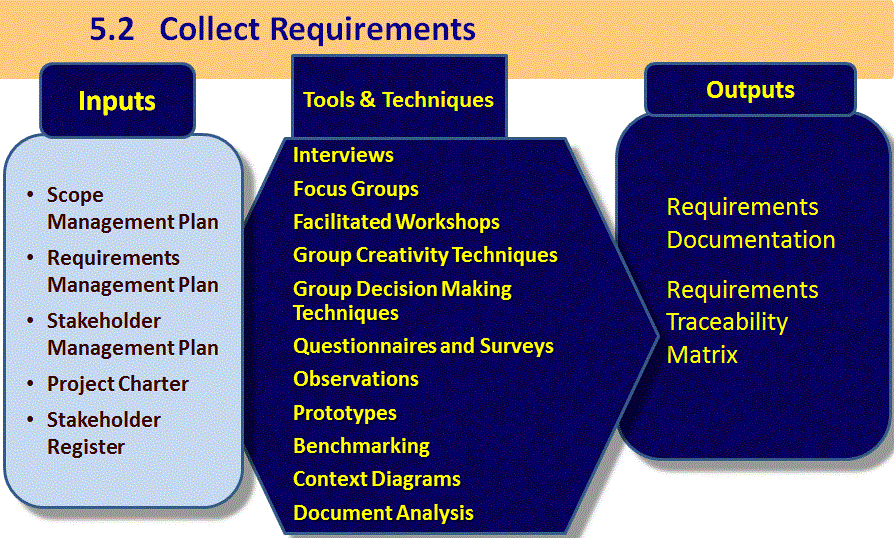
Project Management Institute, A Guide to the Project Management Body of Knowledge, (PMBOK® Guide) – Fifth Edition, Project Management Institute Inc., 2013 Figure 5-4 Page 111
Collect Requirements:
- Provides the basis for defining and managing the project and product scope
- The exam assumes you plan before you act (just like Deming) Requirements include:
- Conditions or capabilities to be met by the final product
- Details on product, functionality, features, attributes, validation
- Need to be obtained, analysed, prioritised and approved by stakeholders
Where do you get this information from?
- The start point is what is contained in the Project Charter (4.1 Develop the Project Charter – during Initiating)
- Who to go to comes from the Stakeholder Register and the Stakeholder Management Plan (13.1 Identify Stakeholders – during Initiating)
Project Management Institute, A Guide to the Project Management Body of Knowledge, (PMBOK® Guide) – Fifth Edition, Project Management Institute Inc., 2013 Page 112
Understanding Requirements
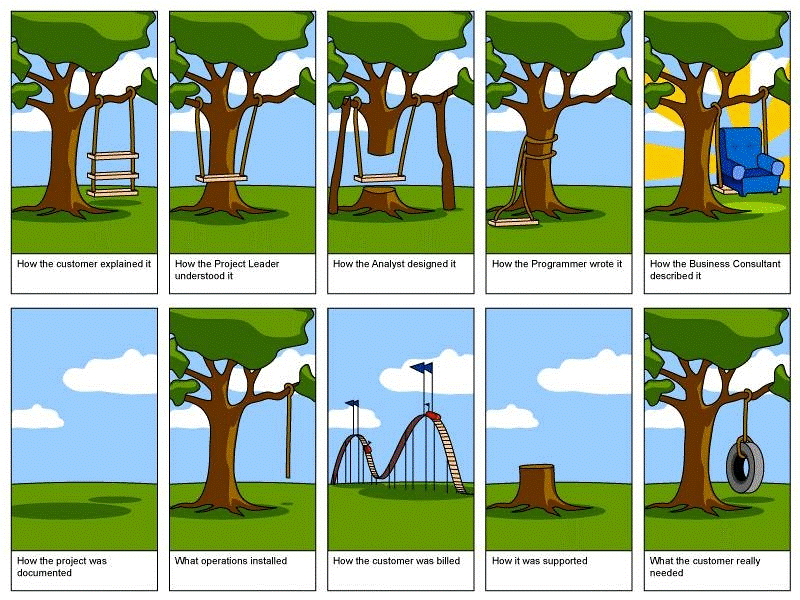
Different Types of Requirements
- Business Requirements – higher level business needs
- Business objectives, vision, strategic alignment, “business need or no need” and set the scope of a business problem to be solved
- Stakeholder Requirements
- Solution Requirements - the "What" in system language
- "Functional requirements" of the solution to be built – the behaviours of the product
- Non-functional requirements – the environmental conditions or qualities required for the product to be effective (reliability; performance; security; safety; service levels; support requirements)
- Transition, Project and Quality requirements
Types of Requirements
- Some stakeholders requirements may be mutually exclusive or difficult to provide, therefore the project may not be able to provide them.
- These should be raised with the stakeholders concerned for resolution before the requirements documentation can be finalized
- Requirements are prioritized, agreed and then used to devise and agree the acceptance tests and their arrangements.
Tools and Techniques - 1
Interviews
- Typically one to one conversations
Focus Groups
- Conducted by a trained moderator
- Subject matter experts and stakeholder participation key
Facilitated Workshops
- Allow key cross-functional stakeholders to define product/project features and to reconcile differences
- Need representatives from all affected functions to ensure all user needs are captured
- Examples include JAD (Joint Application Development), RAD (Rapid Application Development), QFD (Quality Function Deployment)
Group Creativity Techniques
Brainstorming:
- Records all possible options/solutions without judgment, then evaluates the project/product requirements.
Nominal Group Technique:
- “Enhances brainstorming with a voting process to rank ideas”
Delphi Technique:
- Questionnaires are sent to experts: anonymous responses are compiled, prioritized, and sent back, a method for building consensus.
Idea/Mind Mapping:
- A graphical method to consolidate brainstormed ideas; show “commonality and differences”; “generate new ideas”
Affinity Diagram:
- Gathering “lots of ideas and sorting them into groups”, and analyzing them to identify patterns within data
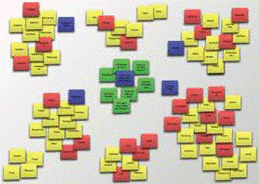
Multi Criteria Decision Analysis:
- Provides a systematic analytical approach using a decision matrix
- To establish multiple criteria
- Evaluate and rank numerous ideas or factors (e.g. particular risks, risk levels)
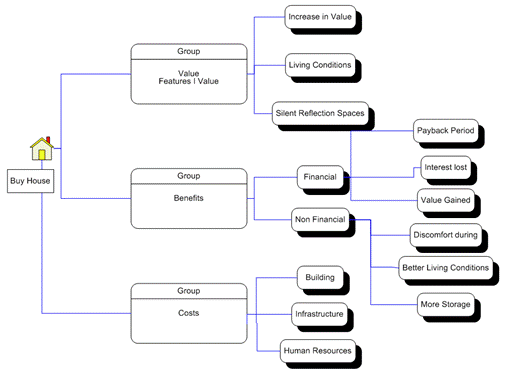
Group Decision Making Techniques
Unanimity - Everyone agrees on a single course of action
Majority/Consensus - Support from more than 50% of the group members
Plurality - Largest block
Dictatorship - Single decision maker
Questionnaires and Surveys
Questionnaires:
- a research instrument
- a series of questions and other prompts to gather information
Surveys:
- a method for collecting quantitative information about items in a population
- questionnaires improve the number and accuracy of responses to surveys
Tools and Techniques - 2
Observations
- Carrying out observations to identify the different needs
- Fly on the wall; looking over the shoulder
Prototypes
- Building a prototype to help the stakeholder(s) /users:
- To visualize and crystallize the end result or an intermediate state
- Provide feedback on it
Benchmarking
- Identifying best in class organisations and what they do, to implement back at base and make improvements
Context Diagrams
- Visually show the product scope by showing a business system and what interacts with it
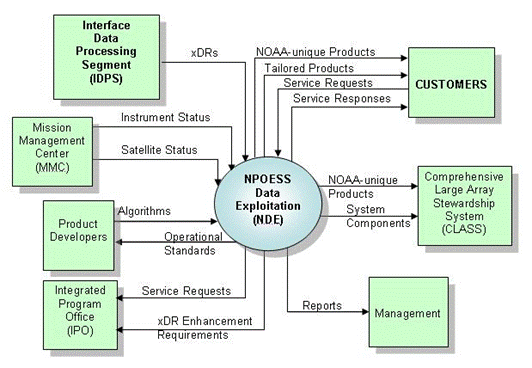
Source: http://en.wikipedia.org/wiki/File:NDE_Context_Diagram.jpg
Document Analysis
- Analysing documents against requirements
Outputs
Requirements Documentation:
- Progressively elaborated record: how each requirement meets the business need, explicit, measurable, accepted in writing
Requirements Traceability Matrix:
- linking requirements to their origin
- tracking them over the project lifecycle
- giving a structure for managing scope changes
- acceptance criteria
Example

Project Management Institute, A Guide to the Project Management Body of Knowledge, (PMBOK® Guide) – Fifth Edition, Project Management Institute Inc., 2013 Figure 5-6 Page 119
Prioritising Requirements - MOSCOW
Must Have Requirements - otherwise business need is not met
Should Have Requirements - which if omitted will compromise system functionality
Can Have requirements - that if included will add benefits
Won't Have - requirements that do not serve the business purpose
Business Requirements for a University Restaurant
Functional:
- Pre-ordered meal deliveries to departmental customers must be completed between 10:00am and 2:00pm GMT.
- All meals in a single order must be delivered to the same location.
- Meals must be ordered 1 day before delivery and chosen from the online menu
- Menus can be modified provided that notice of one month is given
- Daily demand must cater for 25% vegetarian and 5% vegan
Technical:
- Capability for serving 2000 customers simultaneously in the 4 seating areas and from the 6 food counters, with a minimum of 12 serving staff
- All meals fully compliant with food hygiene and FDA regulations
...The business requirements dissect the project into each functional requirement and describes how it works and the dependencies involved in making it work
DISCLAIMER
Firebrand Training grants you a personal, non-exclusive, non-transferable license to access and use the site. You may download or print material from the site only for your own personal, non-commercial use. Read our full terms and conditions on https://firebrand.training/se/learn/terms-and-conditions.
 Part of the BPP Education Group
Part of the BPP Education Group